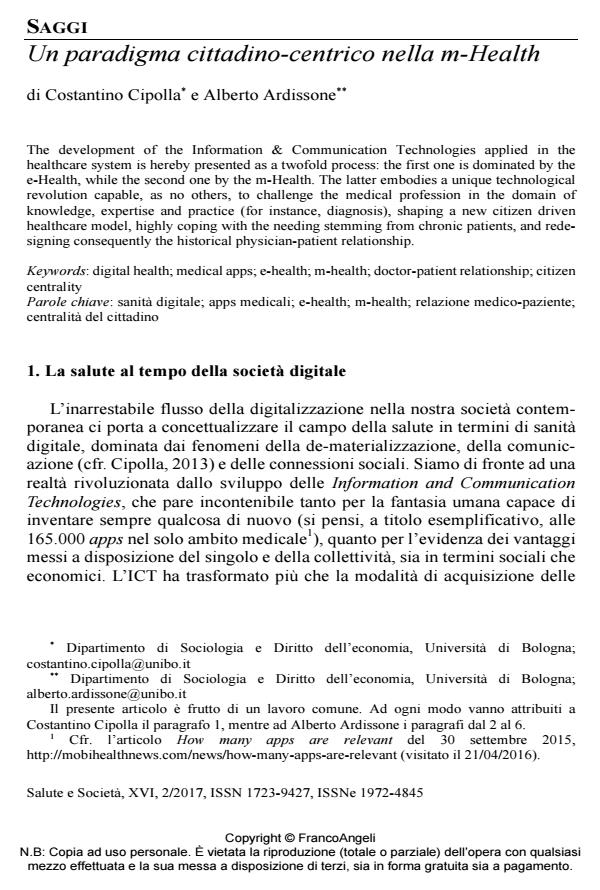Un paradigma cittadino-centrico nella m-Health
Journal title SALUTE E SOCIETÀ
Author/s Costantino Cipolla, Alberto Ardissone
Publishing Year 2017 Issue 2017/2
Language Italian Pages 21 P. 11-31 File size 275 KB
DOI 10.3280/SES2017-002002
DOI is like a bar code for intellectual property: to have more infomation
click here
Below, you can see the article first page
If you want to buy this article in PDF format, you can do it, following the instructions to buy download credits

FrancoAngeli is member of Publishers International Linking Association, Inc (PILA), a not-for-profit association which run the CrossRef service enabling links to and from online scholarly content.
The development of the Information & Communication Technologies applied in the healthcare system is hereby presented as a twofold process: the first one is dominated by the e-Health, while the second one by the m-Health. The latter embodies a unique technological revolution capable, as no others, to challenge the medical profession in the domain of knowledge, expertise and practice (for instance, diagnosis), shaping a new citizen driven healthcare model, highly coping with the needing stemming from chronic patients, and redesigning consequently the historical physician-patient relationship.
Keywords: Digital health; medical apps; e-health; m-health; doctor-patient relationship; citizen centrality
Costantino Cipolla, Alberto Ardissone, Un paradigma cittadino-centrico nella m-Health in "SALUTE E SOCIETÀ" 2/2017, pp 11-31, DOI: 10.3280/SES2017-002002